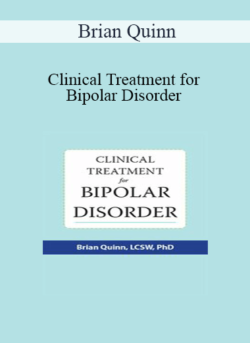5 Hours 50 MinutesIf you have a hard time explaining to your patients about why their heart disease is a risk factor for stroke, or how shrugging their shoulders and sticking out their tongues assesses their brain function, or what to watch for as signs of adverse effects of medications, then you need to go back to the basics with the help of a program that can make the information easy and understandable.Purchase The Brain in Detail – Sean G. Smith courses at here with PRICE $199.99 $85The Brain Revealed — The structure and function of components of the mechanical, endocrine and electrical systems of the brainMental, Physical, Emotional: Connections and Detachments — They work together to maintain homeostasis, but what does it look like when they go astray – and why?Common Neurological Conditions: What Happens and Why — Find out what is really going on during acute stroke, cerebral hemorrhage, seizures and aneurysmsError Messages: What is the Brain Trying to Tell Us — Discover the pathophysiologic mechanisms behind brain dysfunctions such as Alzheimer’s disease, Parkinson’s, and depressionDid you know that there may be permanent damage to the brain during TIA?Or, wonder what exactly your neuro checks assess?Or, become intimidated by caring for patients with neurological problems?If you have a hard time explaining to your patients about why their heart disease is a risk factor for stroke, or how shrugging their shoulders and sticking out their tongues assesses their brain function, or what to watch for as signs of adverse effects of medications, then you need to go back to the basics with the help of a program that can make the information easy and understandable.Most of us learned our anatomy, physiology, and pathophysiology in school, where we were focused primarily on passing the class. We memorized, we studied, but we quickly forgot.You learn differently now. With years of experience, your brain has learned to classify your professional information into “file folders” based on your clinical experiences. Now, when you go back to learn these concepts, your brain will put the information into the correct “folder” to use the next time you encounter a patient with that problem. In other words, you will retain the information now that you have a way to organize it.Attend this program and gain the essential concepts of neurological anatomy, physiology, and pathophysiology that will help you find patient complications faster and respond to them more appropriately. In addition:You will communicate more effectively with physicians and your peersYou will feel more confidentYou will provide safer and more effective careYou don’t want to miss this exciting and applicable program to help improve outcomes and take your healthcare practice to the next level!OUTLINEThe Brain Revealed — The structure and function of components of the mechanical, endocrine and electrical systems of the brainAnatomyLife of a neuronBrain structureSpinal cordPeripheral Nervous SystemAutonomic Nervous SystemAging and the Nervous SystemAssessmentCranial NervesMotor FunctionDTRsLevels of ConsciousnessIntracranial PressureDiagnostic TestsLumbar PunctureCAT/MRIAngiogramEEGMental, Physical, Emotional: Connections and Detachments — They work together to maintain homeostasis; but what does it look like when they go astray – and why?Spinal DisordersHerniated DiscSpinal StenosisSpinal Cord InjuryDegenerative Neuromuscular DisordersHuntington’s ChoreaMultiple SclerosisMyasthenia GravisAmytropic Lateral SclerosisGuillain-Barré SyndromeCranial Nerve DisordersTrigeminal NeuralgiaBell’s PalsyMénière’s DiseaseCommon Neurological Conditions: What Happens and WhyCentral Nervous System DisordersHeadachesCerebral Vascular Disorders: TIA and Stroke AneurysmsSeizure DisordersTraumatic Brain InjuriesBrain TumorsEffects of Alcohol and Alcoholism on the BrainError Messages: What is the Brain Trying to Tell Us?DementiasParkinson’s DiseaseDepressionOBJECTIVESDefine the anatomy and physiology of the neurological system and how this manifests in physical symptoms.Identify neurologic assessment modalities and the connection between how the brain works and the visual assessment.Categorize interventions and strategies for patients with traumatic brain injury based on the pathophysiological process and the long-term effects from these injuries.Describe how chemical imbalances and impulses create disorders such as dementias and Parkinson’s disease.Describe the best method for patient education based upon the knowledge of the pathophysiology of the most common neurological conditions.Tag: The Brain in Detail – Sean G. Smith Review. The Brain in Detail – Sean G. Smith download. The Brain in Detail – Sean G. Smith discount. Purchase The Brain in Detail – Sean G. Smith courses at here with PRICE $199.99 $85

 Cognitive Rehabilitation: Therapy … Therapy … Therapy!!! – Jane Yakel
₹14,110.00
Cognitive Rehabilitation: Therapy … Therapy … Therapy!!! – Jane Yakel
₹14,110.00
 Brian Quinn – Clinical Treatment for Bipolar Disorder
₹6,806.00
Brian Quinn – Clinical Treatment for Bipolar Disorder
₹6,806.00
The Brain in Detail – Sean G. Smith
₹14,110.00


